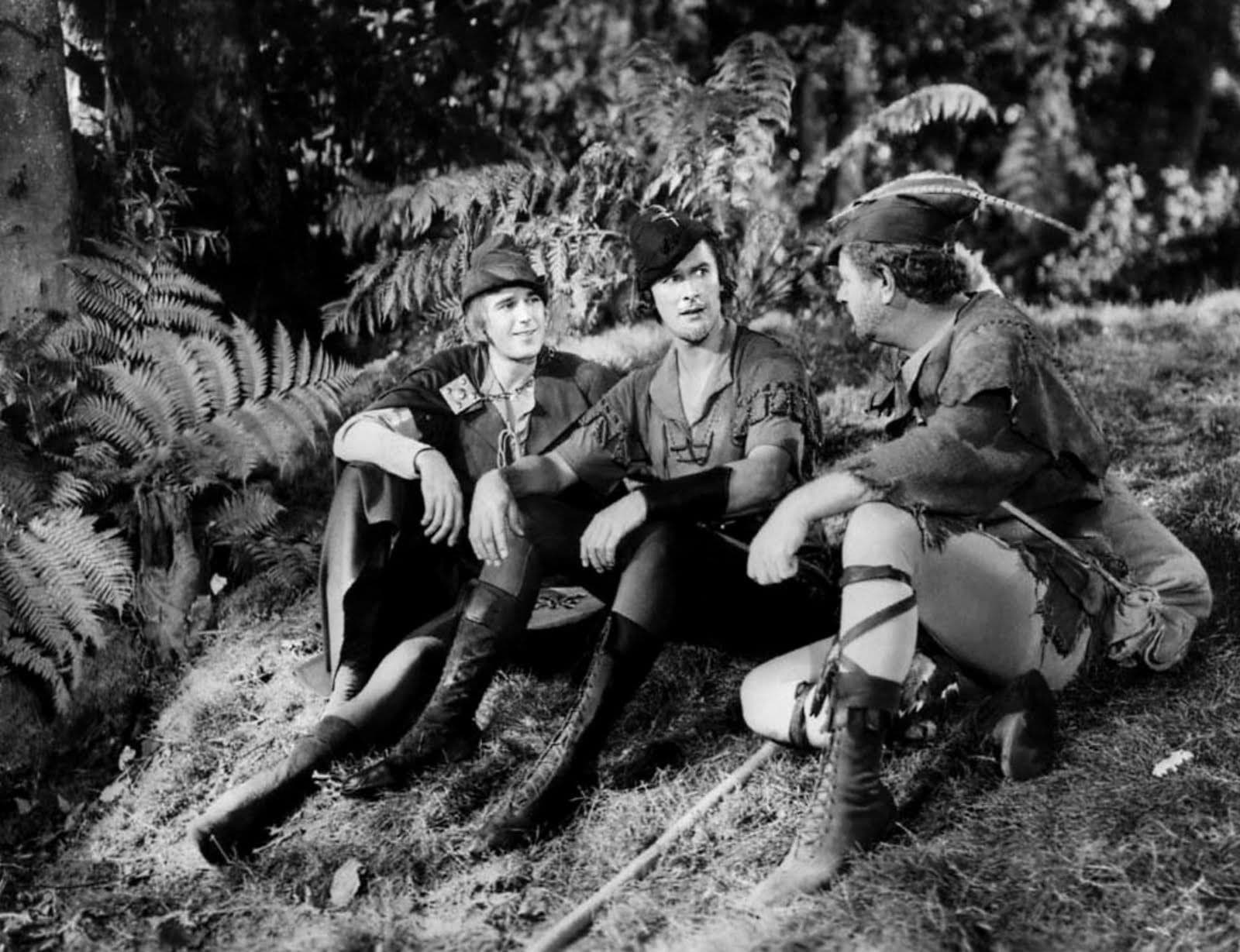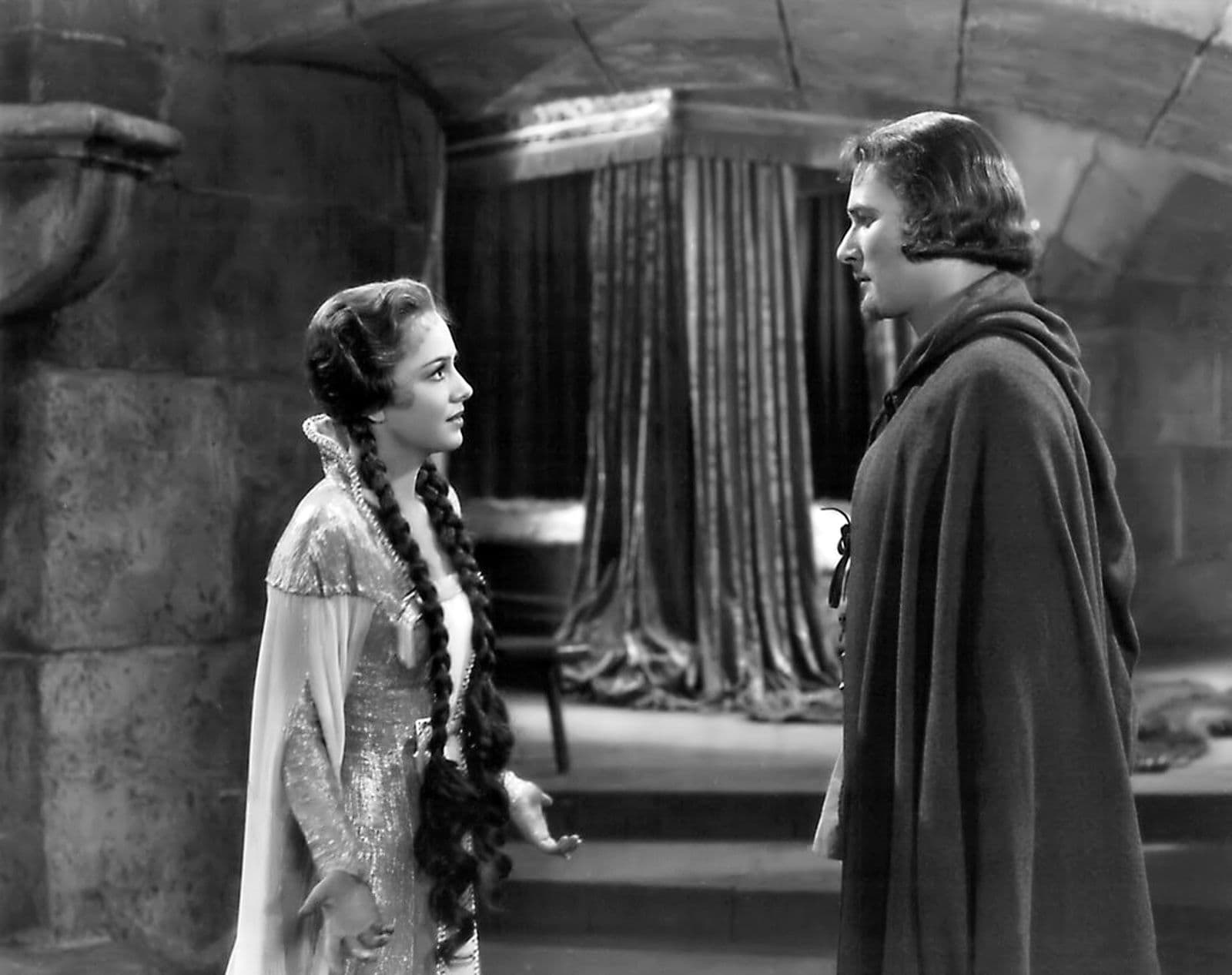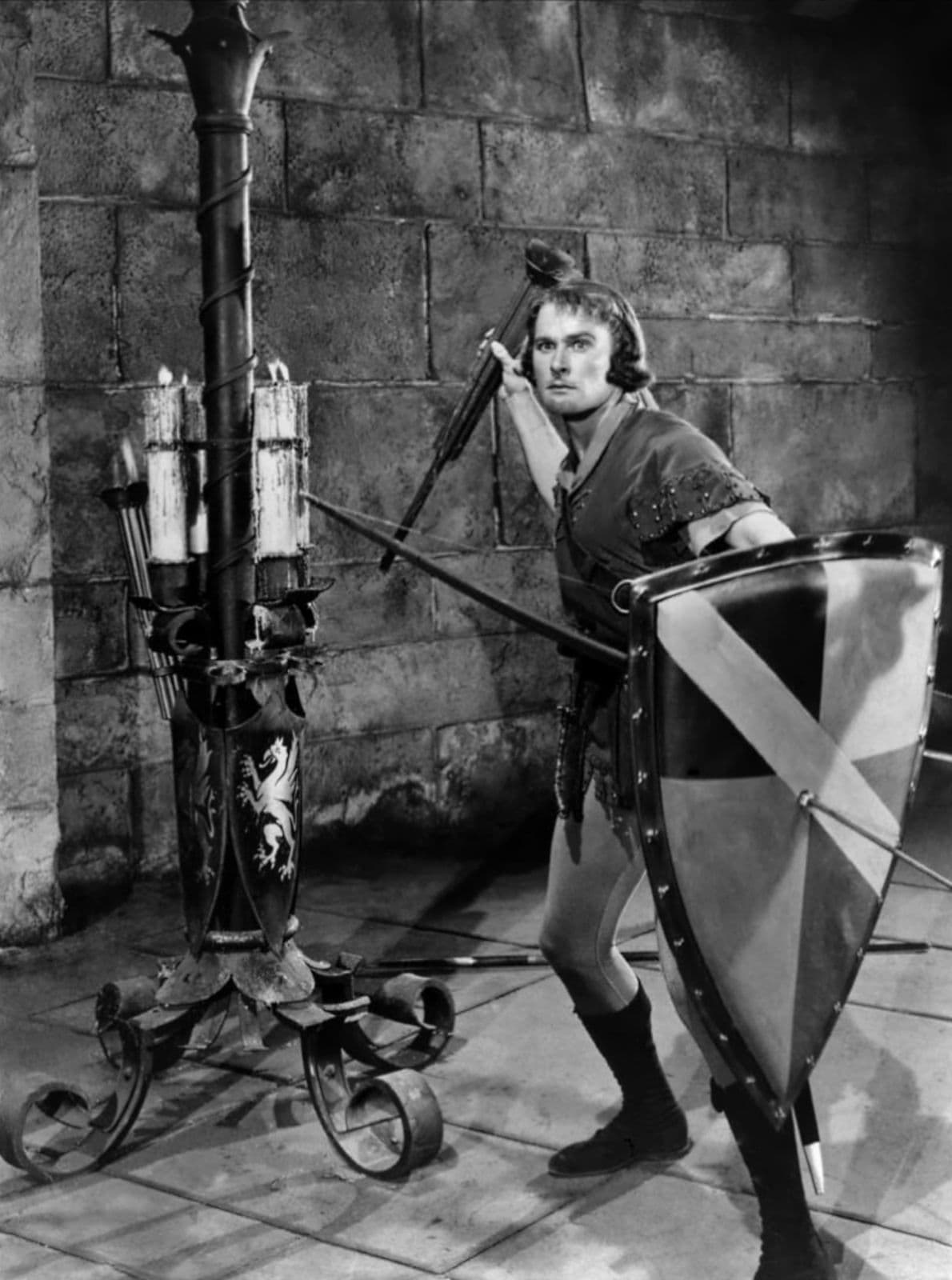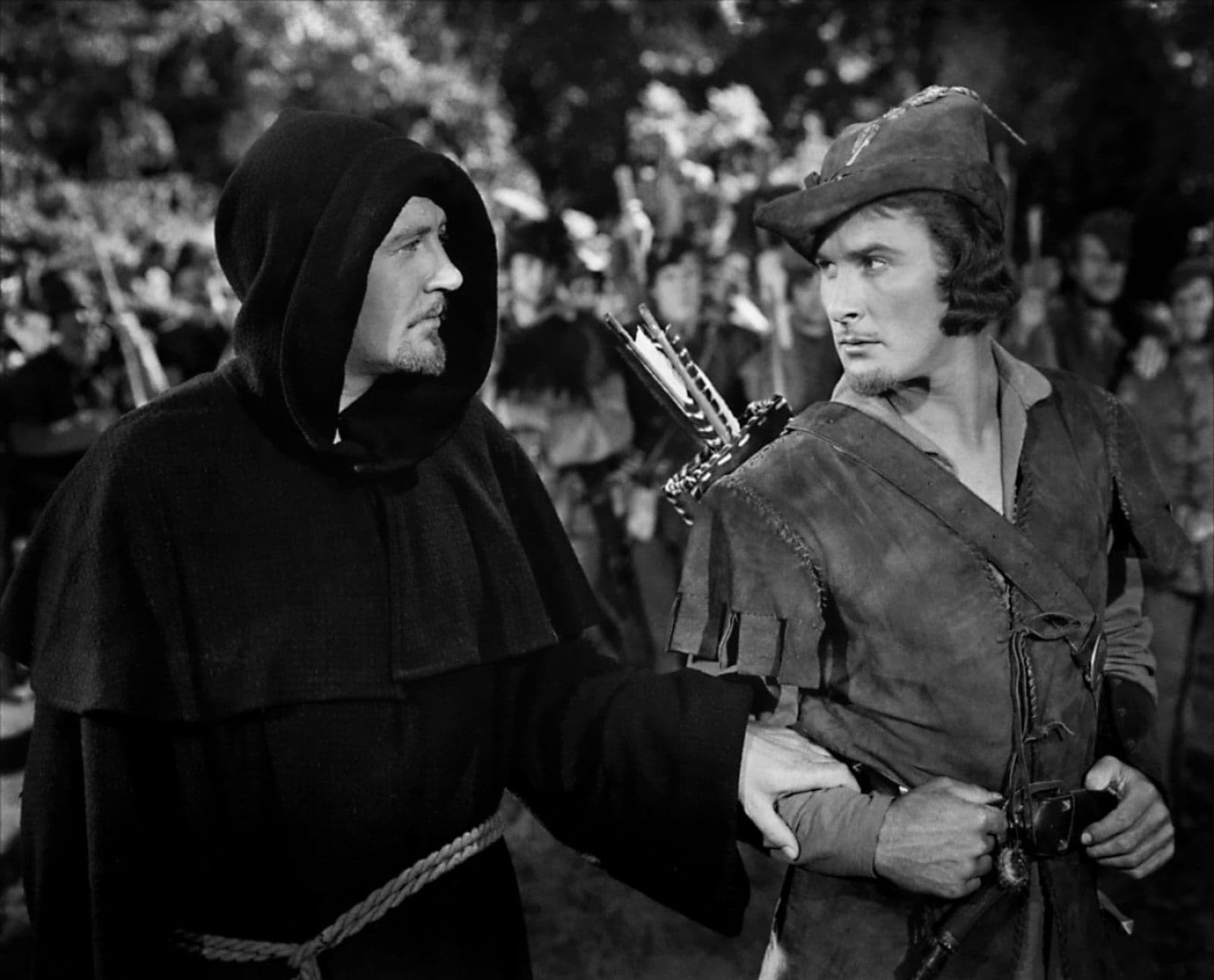
The Adventures of Robin Hood
1938
Rate this movie
Average: 0.00 / 5
(0 votes)
Directors
Curtiz co-directed this first Warner Bros. color film with his friend Keighley. This peculiar co-direction, also born out of the necessity to manage a project of such vast scope and technical complexity, saw Keighley initiate the filming and establish the initial tone, while Curtiz, with his proverbial energy and eye for action and dramatics, took over to imbue the film with the dynamism and relentless pace that would become his trademark. Errol Flynn was chosen to embody the British hero, an actor at the beginning of his career but already swept up by phenomenal success thanks to films like Captain Blood and The Charge of the Light Brigade. His ascension to first-magnitude star, almost a meteor in the Hollywood firmament, was skillfully orchestrated by Warner, which saw in him the perfect embodiment of the romantic and carefree adventurer, an image tailor-made to contrast with the more melancholic or introverted figures from other studios and to offer the public a necessary escapism in a decade dominated by the Great Depression. The result of this admirable synergy of talents – Warner's productive vision, Curtiz's directorial flair, and Flynn's explosive charisma – is one of the first great epic films in the history of cinema, a work that transcends mere entertainment to ascend to a foundational myth of the genre.
The film, pioneering in its use of three-strip Technicolor, exhibits remarkable technical mastery that is itself an integral part of the narrative. The adoption of this cutting-edge technology was not merely an aesthetic choice, but a courageous decision that imposed immense production challenges, from managing the lighting, which required an unimaginable amount of light for black and white film and gave the colors an almost unreal depth, to calibrating the hues, which needed to appear vivid but never jarring. The result is a sumptuous and vibrant chromatic palette: the lush greens of Sherwood Forest contrast with the shimmering reds of the nobles' costumes, the regal gold, and the cobalt blue of the skies, creating an almost painterly visual impact reminiscent in part of adventure novel illustrations and medieval miniatures. The lavish sets, conceived with an almost operatic grandeur by Warner's art department, and the elaborate costumes, designed with meticulous attention to detail despite their Hollywood stylization, are not merely backdrops but active elements that contribute to building a world of fairy tale and adventure. The combat choreographies, orchestrated with almost balletic precision by fencing master Fred Cavens and directed by Curtiz with breathtaking energy, set a standard for hand-to-hand combat in action cinema, particularly the famous sword sequence between Flynn and Basil Rathbone (as the ruthless Sir Guy of Gisbourne), a duel that remains iconic for its speed and precision. Sherwood Forest, rendered with suggestive cinematography that skillfully plays with light and shadow, becomes a legendary microcosm, a green sanctuary where not only the physical struggle unfolds, but also the ideological one of Robin Hood and his men against oppression, a refuge for freedom in a world dominated by tyranny.
Flynn, with his magnetic stage presence and irresistible charisma, embodies the archetype of the romantic and rebellious hero with disarming naturalness. His Robin Hood is not a gloomy or tormented character, but a man of refined elegance and jovial spirit, whose actions, though outlawed, are always animated by an innate sense of justice and a deep loyalty to his legitimate king and the people. He becomes a champion of social justice, a precursor to the "gentleman thief" who populated popular literature, and his fight against the tyranny of Prince John and the Sheriff of Nottingham resonated powerfully in an era, the late 1930s, when the world was facing new and disturbing forms of authoritarianism. The film, despite its fairy-tale and adventurous guise, conveys messages of rebellion against injustice, solidarity among the oppressed, and hope in the triumph of good, universal themes that guarantee its eternal relevance.
In England, while King Richard the Lionheart is engaged in the Crusades, his wicked brother John usurps the throne and oppresses the people with unjust taxes. The noble Saxon Robin of Locksley rebels and, banished by Prince John, takes refuge in Sherwood Forest, becoming the legendary Robin Hood. With his band of merry outlaws, including Little John, Friar Tuck, and Will Scarlett, Robin steals from the rich to give to the poor, defying the authority of John and his ruthless Sheriff of Nottingham. The narrative proceeds at a relentless pace, punctuated by spectacular action scenes and moments of lightness and humor, perfectly balanced by the romantic tension that develops between Robin and Lady Marian. Their relationship is not immediate: it begins with mutual distrust, almost an intellectual and willful challenge, before transforming into a deep and resolute love. Lady Marian, portrayed by an Olivia de Havilland of rare grace and determination, is not a mere damsel in distress, but a strong and independent female figure, who evolves from skeptical observer to fervent ally of Robin, embodying in turn a form of rebellion against the established order and the moral corruption of the court. This dynamism adds a layer of emotional complexity to an already adventure-rich plot. The fight against oppression culminates in a thrilling archery tournament and an epic final battle, which sees the return of King Richard and the triumph of justice. Robin Hood, finally free and rehabilitated, can marry his beloved Marian and live happily ever after in Sherwood Forest.
The film, celebrated for its spectacular nature and intrinsic artistic value, achieved enormous critical and commercial success, cementing Warner Bros.'s position as a leading studio in the adventure genre. The three Academy Awards received – for Best Production Design, Best Editing, and, in particular, Best Original Score – testify to the perfection achieved in every technical and creative department. Erich Wolfgang Korngold's music, the true backbone of the work, is not mere accompaniment, but an essential narrative element that enhances the action, underscores emotions, and lends epic scope to every single scene, with its memorable leitmotifs anticipating the grandeur of future cinematic symphonic scores. Its influence on adventure cinema has been profound and lasting, establishing itself as an unparalleled model. Directors like Ridley Scott with Gladiator drew inspiration from its visual grandeur and its emphasis on individual heroism against tyranny, while Peter Jackson with The Lord of the Rings borrowed its ability to build epic and engaging worlds where the struggle between good and evil unfolds in majestic landscapes. Even films like Mel Gibson's Braveheart and Gore Verbinski's Pirates of the Caribbean saga owe much to the inexhaustible energy, ardent romanticism, and sense of swashbuckling freedom that pervades Curtiz's Robin Hood, demonstrating how its adventurous aesthetic has become a global archetype. Its hero is the very archetype of every Robin Hood, iconically transfigured in Errol Flynn's agile features, in his fearless bearing, in his acrobatic movements that seem to defy the laws of physics, in his powerful and joyful stage presence that radiates vitality. Every version of Robin Hood that follows will pay a heavy tribute to this invaluable heritage of the collective imagination, never fully managing to extricate themselves from the aesthetic and narrative legacy of this seminal masterpiece, a beacon in the adventure genre that continues to shine undiminished through time.
Country
Gallery






Featured Videos
Official Trailer
Comments
Loading comments...